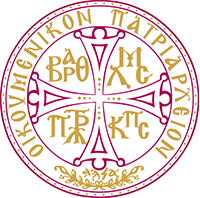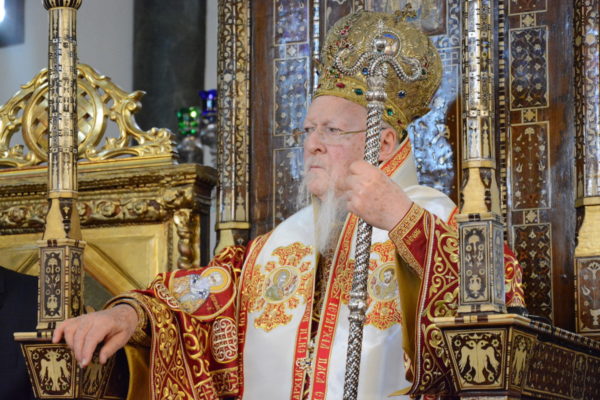
***
Your Eminences,
Distinguished Participants,
We welcome you to the International Symposium titled “Constantinople and Mtskheta – Ecclesiastical and Cultural Interactions”. This congress, under the patronage of the Ecumenical Patriarchate and organized by the Georgian-speaking Parish of Constantinople, is an important initiative. We hope that remembering the centuries-old relations between the two ancient sees of Constantinople and Mtskheta, both founded by the Apostle Andrew the First, and cultivating theological and academic understanding of these events, will unveil new dimensions, needs and requirements of this relationship.
Centuries before the birth of Christ, Byzantium was a small city founded by the Greeks on the shores of the Golden Horn. It was established as the new Rome, renamed Constantinople and made the capital of the Roman Empire in the east around 330AD on the initiative of the first Christian emperor of Rome, St. Constantine the Great. This city united the cultures of the East and the West and connected Europe and Asia just as, centuries earlier, the city of Mtskheta, established by Georgians at the confluence of the Mtkvari and Aragvi rivers, had bridged European and Asian cultures in the Caucasus region. Mtskheta later became the Christian and cultural hub of the nation during the reign of the first Christian Georgian king, Mirian III.
The people of Georgia are one of the most ancient Christian peoples, and preserved their Orthodox identity and loyalty in its apostolic and patriarchal roots and traditions. The Church of Georgia preserved and cultivated strong and unbreakable ties with the Church of Constantinople, which supported it in all its trials and times of trouble, not only during the Byzantine period, but also up until today.
Constantinople, as a political, religious and educational center, exerted a magnetic pull on Mtskheta, and the religious and cultural links that began in the fourth century reached their zenith in the tenth century. With the blessing and support of the primates of the churches of Constantinople and Mtskheta, many Georgian monasteries and educational centers were founded on Mount Athos, on Mount Olympus in Bithynia, in Bachkovo/Petritsoni Monastery and various other large cities and religious-cultural centers under the jurisdiction of the Church of Constantinople, where the texts of the Holy Scriptures and theological texts were translated and edited from Greek into Georgian, enriching Georgian literature.
At the beginning of the 20th century, Georgian Christians living in Western European countries found refuge in the jurisdiction of the Ecumenical Patriarchate. The Church of Constantinople established Europe’s first Georgian parish, named after St. Nino, Equal to the Apostles and Enlightener of the Georgian people, and ordained the Georgian scholar Grigol Feradze, who, due to the communist government in Georgia, was compelled to stay in Europe. He was a priest and ultimately finished his ministry in the Auschwitz concentration camp with self-sacrifice and martyrdom for his fellow man. In recognition of Archimandrite Grigol Feradze’s merits, canonized by the See of Mtskheta, the Holy and Sacred Synod of the Ecumenical Patriarchate decided that the Georgian-speaking parish of Constantinople should celebrate the feast day of St. Grigol.
The crowning achievement of the blessed ties and good relations between the two churches was the granting of autocephaly to the Georgian church by the Ecumenical Patriarchate and Patriarchal dignity to its Primate in 1990, in recognition of the invaluable contribution of the Georgian church to Orthodoxy and to the Georgian people throughout the course of history. This canonical initiative and action of the Great Church is a confirmation of the stability and prestige of the Georgian Church, both across Orthodoxy and Christianity. It is important to note that both our predecessor, Patriarch Dimitrios, and our brother in Christ, the Catholicos-Patriarch of Georgia, Ilia II, played significant roles in this process. We are glad to have been directly involved in this process, having visited Mtskheta many times, and we remain committed to the strengthening and reconstruction of Christ-like love between our churches.
Every visit to the church of Georgia was a profound experience for us, a pilgrimage and liturgical strengthening through the many sincere manifestations of honor and love for our humble person, and devotion and respect for the Church of Constantinople.
We send a fraternal greeting of love in the Lord and honor from our venerable See to our brother, His Beatitude Patriarch Ilia II of Georgia, and to the blessed multitude of the Church of Georgia. Faithfulness to Orthodoxy has been beneficial for saving the identity of the Georgian people, because from it springs creativity, an ethos of freedom, trust in the future, and hope. With this, problems can be resolved through honest dialogue in a spirit of solidarity and mutual trust. There are no easy solutions, but there is hope and perspective, especially when we believe that the Lord of history is Christ, the Prince of peace.
We anticipate that these topics will be discussed at this symposium, and we would like to confirm our love and respect to you once again and hope that such meetings and events will renew historical memory, contribute to the deepening of Byzantine and Georgian studies, and strengthen the unity between churches and peoples.
Finally, we pray for every blessing from above for the Georgian-speaking parish and community in the City, and we are able to assure you once again of the support and the constant care of the Ecumenical Throne and of ourselves personally for its good progress ahead.
May the grace of our Lord Jesus Christ, the love of God the Father, and the communion of the Holy Spirit be with all of you. Amen!



